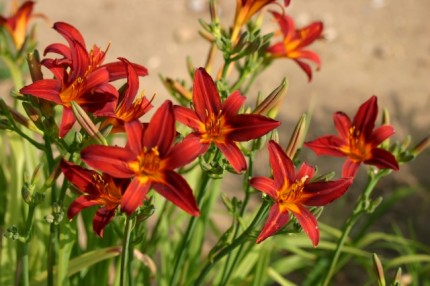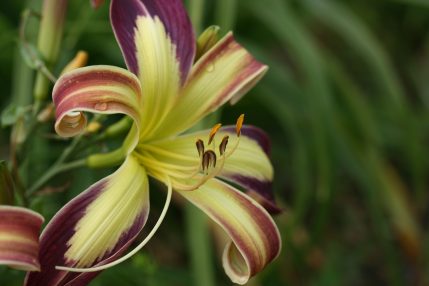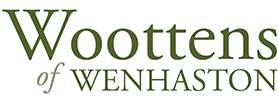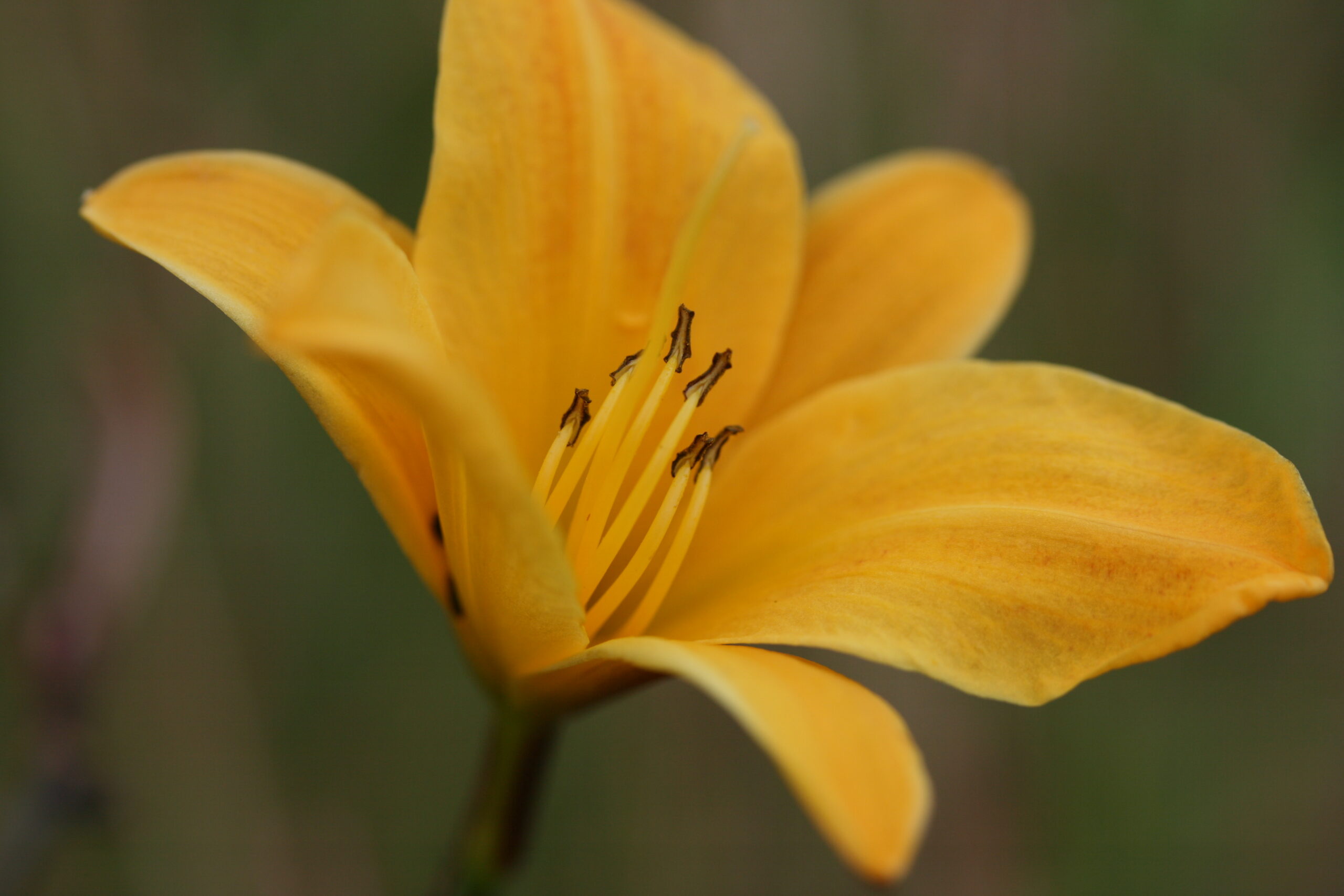Hemerocallis
Hemerocallis, commonly known as the ‘Daylily’, make wonderful garden plants. They are easy to grow, drought tolerant and simply require a sunny position. Thriving in any soil from clay to sand. They flower throughout June, July and August and provide us with fresh green foliage from as early as February. They are reliable, robust and above all beautiful. Woottens has been growing Hemerocallis since 2004 and now houses one of the biggest collections in the UK comprising of over 400 different varieties. Plants are field grown and lifted throughout the year.
The nursery supplies Hemerocallis as bareroot plants throughout the year from Jan-Dec. Plants can be lifted and planted all year round although the prime times are Autumn and Spring. Autumn is the most beneficial time to plant as the roots will establish well over the winter and plants are likely to flower the following summer.
From the point of order is usually takes 10 working days to lift and dispatch plants and they should be replanted or potted ideally within two weeks of arrival. Depending on the variety plants are supplied as double fans or ‘ramets’ or clumps for fine leaved forms. Leaves are cut back to reduce water loss.
How and when to order Hemerocallis
Hemerocallis can be ordered all year round and will be dispatched within 7-10 working days. There may be delays if the ground is frozen or we are experiencing periods of drought. We do not lift plants if it is detrimental to them. Updates on our mail order dispatch times can be found on this page of our website: Mail Order Updates
Hemerocallis are dispatched as bareroot plants ready for planting. They will survive out of the ground for many weeks but will begin to dehydrate after a few days. Ideally plant or pot up within 2 weeks.
 Hemerocallis Care Notes
Hemerocallis Care Notes
SOIL. In a dry, arid garden, where real lilies, such as L. regalia, linger miserably and reproachfully for a year or so, and then expire from malnutrition and thirst Hemerocallis thrive without fuss. They are the easiest of garden plants and will grow happily in any soil, from barren, heath-land sand to heavy clay.
WATER. Hemerocallis will never succumb to drought. Watering is unnecessary, although in a very dry spring or summer, water more frequently to encourage the best blooms and prolong the flowering season
SUN. Most Hemerocallis thrive in positions of full sun, although dark red varieties should be shielded from the afternoon glare as this can literally melt the upper layers of pigment. All Hemerocallis do best in open positions, which receive at least morning sun, but they will grow in shade. Their flowering stems in shade will be taller and they will produce less buds. They are not suitable for growing under trees, as the flowering stems will reach slantingly towards the light, looking as if the cat has slept on them.
DEADHEADING. Some flowers are as beautiful in their terminal dishevelment as in their blooming; Hemerocallis alas are not one of these. The spent flowers show an unseemly haste to proceed down the path of putrefaction, liquefying within hours into a sticky mess. Daily deadheading during the flowering season greatly improves the appearance of all Hemerocallis. After all the flowers on a stem have bloomed, the stem should be cut to the ground, to avoid the plant putting energy into unnecessary seed production.
END OF SEASON TIDY UP. When tidying up the garden for winter, deciduous Hemerocallis can be cut to the ground. Removal of old foliage will reduce problems with snails and slugs in the Spring as snails like nothing so much for Winter quarters as decaying foliage. Evergreen forms can be cut down and will produce new growth in the spring or left for winter interest
PROPAGATION. Plants are easily divided and each division must include a section of root and a ‘fan’ or foliage. Plants are often sold as single or double fans depending on the size of the varieties. Fine leaved forms are sold more as ‘clumps’. Each fan is known as a ‘ramet’, some plants produce just one additional ramet each season, others up to 15.
Plants can be divided all year round, although division near the flowering season will delay or postpone blooms for that year. Autumn or winter divisions should flower the following year, spring and summer divisions will flower a year later.
When dividing and replanting trim the foliage to reduce water loss but not too hard as plants require their leaves to photosynthesise. Approx. 6 inches is sufficient depending on the time of year.
Seed can be collected and germinated, collect in September- October when ripe, fertile seeds are usually black. Sow in early winter. Germination takes place with temperatures 5+ degrees. Young plants can be hardened off that spring and normally flower the following year.
PESTS AND DISEASES. Hemerocallis are remarkably carefree plants, being immune to mildews, aphids, virus, lily beetle, vine weevil, to name a few of the plagues which beset so many garden plants. Damage by slugs and snails is minimal. However one pest that can be prolific is the Hemerocallis Gall Midge.
Hemerocallis Gall Midge is a small fly that lays its eggs in the flower buds of Hemerocallis, or Daylilies. The buds become distorted and fat, looking more like a parrot tulip than an elegant Daylily bud. If broken open you’ll see numerous larvae that look similar to maggots in a watery liquid.
Hemerocallis Gall Midge
The Insects Life Cycle
The insect itself lays just one generation a year but can lay over 100 larvae in one flower bud.
The adults are actively laying their eggs between May-July; the larvae then feed inside the buds, once fully fed they overwinter in the soil below the plant in silk cocoons and then emerge the following year
Control
Currently there are no chemical controls for Hemerocallis Gall Midge. Certain insecticides such as Bug Clear Ultra can reduce the infestations but not eliminate it. We DO NOT advise using this control as the product contains Neonicotinoids that are harmful to bees.
The best controls are observational; remove any infested buds as soon as they are spotted. Burn the buds or put in your household bins, DO NOT put on the compost or into any other part of the garden. If this is regularly done the life cycle of the insects will eventually be broken.
As the larvae overwinter in the soil below you can try applied insecticide to the area around the base of the plant in order to kill the larvae before they hatch. A more organic method would be to lift the plant and the surrounding soil if possible, completely strip out the compost from the roots and wash thoroughly, replant into fresh sterile compost or transplant to another area of the garden. This is best undertaken in the late autumn.
Plant Selection
When choosing Hemerocallis make sure you buy plants from a reputable source, bareroot plants are best as little or no soil transferal takes place. Plants supplied should be cut back for planting and will not contain any flowering stems, if they do remove them to prevent the spread of the insects
As the Gall Midge lays eggs between May and July it is advisable to choose late season varieties that won’t has produced buds when the fly is active.
A list of recommended late season cultivars is given below.
These plants are not resistant to the Gall Midge and flowering seasons are highly dependent on the weather each year.



Joan Senior
Stafford
Frans Hals
Green Flutter
Lemon Bells
Marion Vaughn
Stella D’Oro
Whichford
Divertissement
Gay Troubadour
Crimson Pirate
Heidi Edelweiss
Trevi Fountain
Mount Echo Sunrise
Judge Roy Bean
Dragons Eye
Jersey Jim
Lin Wright
Catherine Woodberry
Booroobin Magic
Some of the these varieties can be purchased on our website. For others please enquire by emailing info@woottensplants.co.uk
Societies dedicated to growing Hemerocallis:
The British Hosta and Hemerocallis Society
https://www.hostahem.org.uk/
American Daylily Society
https://daylilies.org/
American Daylily Cultivar Search
http://www.daylilydatabase.org/
American Hemerocallis Society
https://www.daylilynetwork.org/

![]() Click here to view Hemerocallis Care Notes
Click here to view Hemerocallis Care Notes
Hemerocallis Care Notes
![]() See the Full List
See the Full List
© Woottens of Wenhaston Ltd 2024 | REG: 10235687














 Twitter
Twitter Facebook
Facebook Pinterest
Pinterest